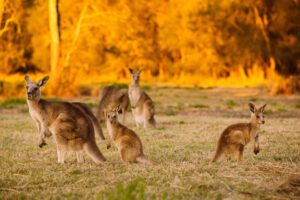Bactrian camels, native to the Gobi Desert in China and the Bactrian steppes of Mongolia, grow a shaggy coat in the winter for protection from the freezing cold and shed the coat during the hot summer. These camels can survive a wide range of temperatures, from minus 20 degrees Fahrenheit (minus 29 degrees Celsius) to 120 degrees Fahrenheit (49 degrees Celsius)!
Camels are diurnal and spend their days eating. They are very clever at finding food in their harsh desert environment. Each half of the split upper lip moves independently, so camels can get near the ground for eating short grass. These tough but flexible lips can break off and eat vegetation such as thorns or salty plants; they even eat fish.

Camels are ruminants, like cows, and they regurgitate the food back up from their stomach to chew it again. When they do that, smelly gasses come up as well, making for some pretty potent breath!
Highly social, camels live in herds with a dominant adult male; males that have been chased out of the group form bachelor herds. They make many sounds, including moaning and groaning sounds, high-pitched bleats, loud bellows, and rumbling roars. Mothers and their newborns hum to each other.














